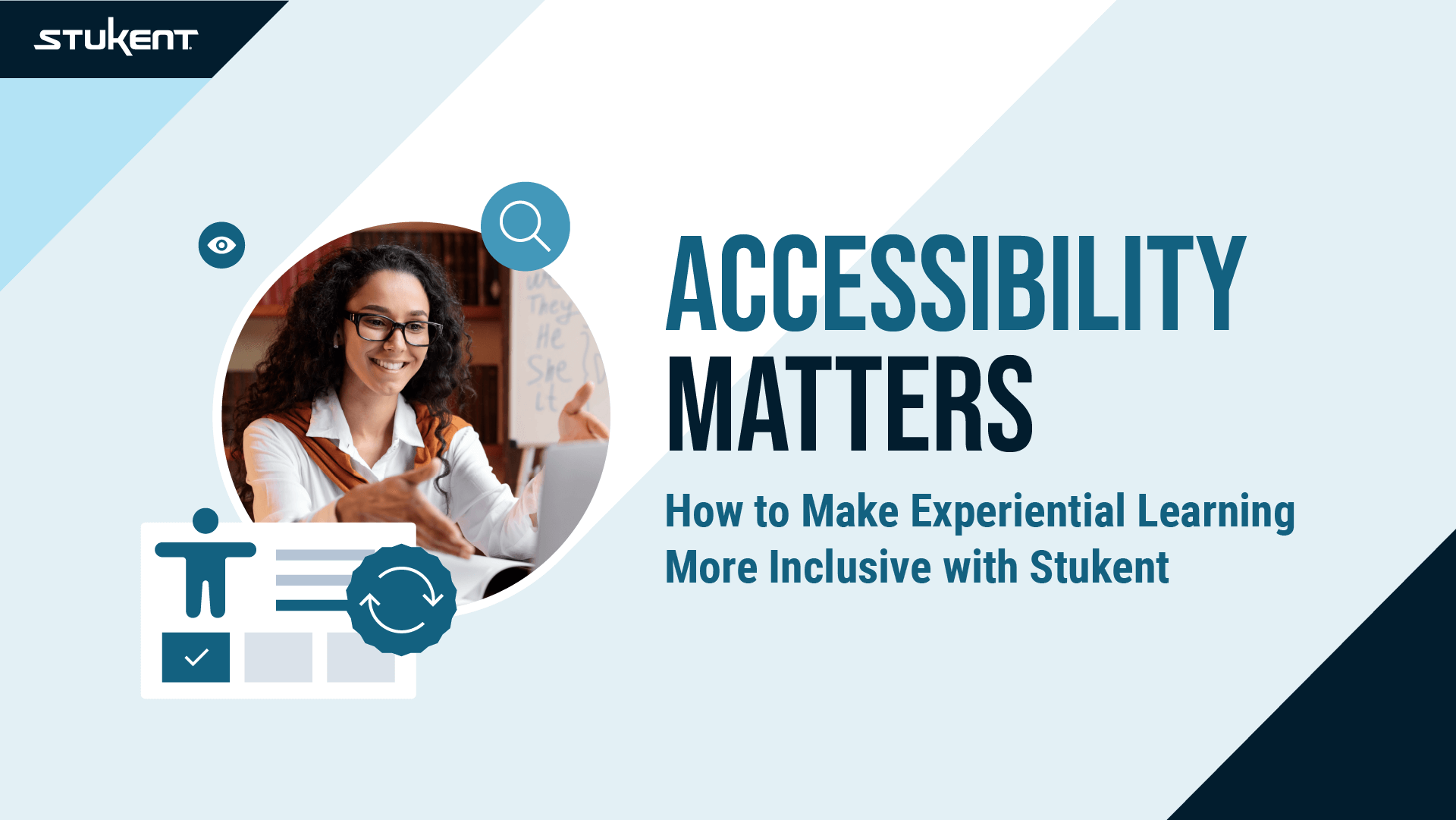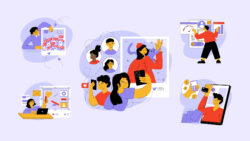Accessibility features aren’t just good for learners with disabilities, they’re good for everyone in your course! Accessible instructional materials provide all students with an equitable gateway to learning. From closed captioning to alt text, keyboard shortcuts, and more, accessibility features ensure every learner can achieve success, no matter the circumstances they face.
Stukent makes it easy to add accessible learning experiences to your course. Read on to learn more about WCAG compliance and the progress we’re making toward equity in experiential education!
Why Accessibility?
Accessibility ensures all students can acquire the same knowledge, participate in the same learning interactions, and achieve the same levels of subject mastery. In the United States, academic and educational organizations have ethical and legal obligations to provide accessible learning materials to students.
In 2022, Stukent began making accessibility improvements to our courseware and Simternships. Today, our courseware conforms to WCAG 2.1 AA standards, which means it provides sufficient support to learners with a wide range of visual, auditory, motor, and cognitive disabilities.
As of fall 2024, our team continues to work toward WCAG 2.1 conformance for Stukent Simternships. We are committed to developing inclusive simulations that conform with WCAG requirements and provide robust, hands-on learning experiences for all students.
“At Stukent, we recognize that accessibility is essential. That’s why we’re evolving our processes to address diverse learning needs, so all students can engage with career-relevant learning and thrive.” — Ann-Michelle Levangie, Director of Instructional Design, Stukent
Wait, What’s WCAG?
The Web Content Accessibility Guidelines, also known as WCAG, are standards that help make web content more accessible to a wide range of users. These guidelines not only make the web a friendlier place for users with disabilities, but they also improve the overall user experience for everyone.
The Four Principles of WCAG — Perceivable, Operable, Understandable, and Robust — provide the foundation for digital accessibility. Stukent courseware currently supports all of this functionality and more, providing learners of all abilities with an accessible, responsive experience.
P for Perceivable, which means that web content is easy for all learners to see and hear. Web content is available for learners using a variety of senses, including:
- Text alternatives for timed media, including closed captioning, video transcriptions, and alt text for photos.
- Sufficient color contrast ratios, including 4.5:1 for text. Large-scale and bold text may have a contrast ratio of 3:1. Color is not the only means of identifying information in content such as images and graphs.
- Concise, meaningful content that can be presented in various formats or ways.
O for Operable, which means that web content allows users to navigate the information using their preferred tools. Web content is available for learners using a variety of senses, including:
- Keyboard accessibility, which means all content is operable through a keyboard interface (e.g., the Tab button).
- Header tags (e.g., H1, H2, and H3) must be utilized to organize content for screen readers.
- Descriptive links that tell users what will happen when they click a link.
- Video content can be stopped and restarted by the learner.
U for Understandable means that web content supports user comprehension. Web content is available for learners using a variety of senses, including:
- Concise text appropriate for the audience’s general Lexile level (reading level).
- Predictability and consistency, ensuring web pages conform to user expectations and the established conventions of web design.
- Language of page and parts, which means the page language can be programmatically determined by a screen reader.
And R for Robust, which means users can access web content on their preferred devices. Web content is available for learners using a variety of senses, including:
- Responsive design that works on multiple devices, including PCs, Macs, tablets, and smartphones.
These features are essential for all learners. For example, a student with a broken arm may rely on the Tab key to navigate their courseware. An asynchronous student on a busy train may need closed captioning to review a video lesson. Or, the student who works full-time may need to access learning materials from their smartphone on the go.
Accessibility helps everyone — and that’s why Stukent is committed to developing materials that allow every student to be a success story.
“Stukent recognizes that when we build an accessible world, everyone wins. From illness, to age, to injury, and more every single person will need access to different supports throughout their lives. We are boosting our continued efforts in alt text, transcripts, color contrast, and different learning types through ongoing training and learning from people’s lived experiences. Not only are we creating an accessible learning environment, we are making accessibility the standard.” — Katie Walsh, Senior Editor, Stukent
Improved Accessibility Features
Though Stukent courseware conform to WCAG 2.1 AA standards, our Instructional Design, Content Production, and Engineering teams continue to make improvements to the courseware platform.
The following features are on the roadmap for Stukent courseware in the coming year:
- Alternate formats for learning materials where appropriate, such as downloadable video transcripts. (WCAG Principle: Perceivable)
- Enhancements to instructor support with strategies for implementation in a diverse classroom, such as untimed engagement activities where a timer may cause undue anxiety. (WCAG Principle: Operable)
- A content production process that validates the visual accessibility of all learning materials, ensuring accessibility is built in. (WCAG Principle: Perceivable)
In 2024, we are working toward WCAG 2.2 compliance for our courseware platform.
“Stukent editors create accessible courseware content and resources including lecture slides, lesson plans, and assignments. Editors are trained to write alt text, and descriptive hyperlinks, use correct headings hierarchy, and conform to WCAG standards.” — Shannon Pofelski, Senior Editor, Stukent
Stukent Simternships require additional platform improvements to support WCAG 2.1 conformance, and the work toward a more inclusive, accessible platform is ongoing. These efforts aim to provide an inclusive, hands-on learning environment that mirrors the accessibility standards of our courseware, helping all students engage meaningfully with career-relevant, simulation-based education.
At Stukent, we are committed to helping educators help students help the world, which includes making innovative education more accessible for all. To read more on Stukent’s commitment to accessibility, please visit our ADA Compliance page.
To learn about Stukent Simternships and courseware and to get FREE instructor access to Stukent materials, visit our website.






